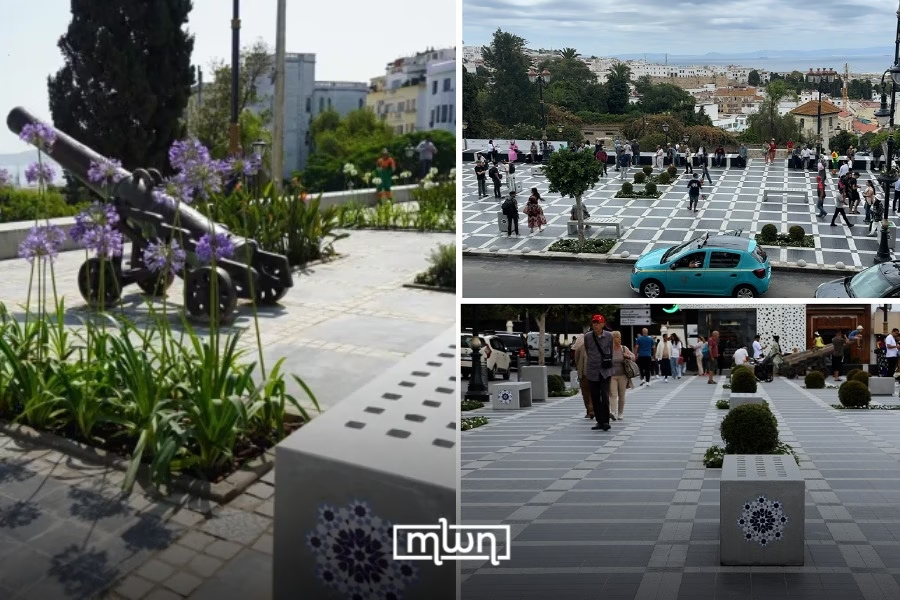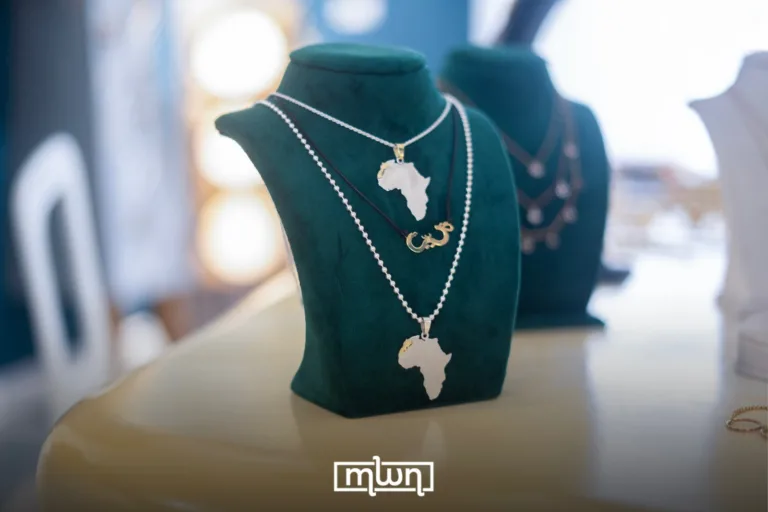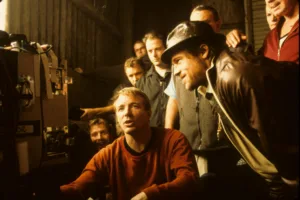Far from being a landmark by design, one structure has evolved into a cultural fixture shaped by time and habit.
Fez- There’s a place in Tangier where time doesn’t seem to move. Where the city’s hurried rhythm pauses for a moment.
That place is Sour Ma’gazine, a stretch of cement that offers no glamour, no grandeur, but somehow holds more stories than any monument ever could.
A simple bench-like structure overlooking the Mediterranean, it has become a living archive of the city’s social life, its shifts, and its quiet hopes.
Originally built in 1911, Sour Ma’gazine was never designed to be iconic. Its first purpose was purely practical: a wall built to keep back the creeping dunes.
But what emerged from that modest beginning was something far more meaningful. It evolved into a terrace, a viewing point, and eventually a symbol.
Today, what stands there is a wide concrete ledge, somewhere between 50 and 70 centimeters high, spanning dozens of meters. It’s not much to look at, but somehow, it’s where Tangier goes to reflect, to rest, or just to watch the world go by.
Its name, like much of its history, is wrapped in debate. Some say it refers to those who used to sit there day after day: the idle men, the “lazy ones,” who made a habit of simply observing rather than acting.
Others link the name to a misheard sign from a nearby photography studio, “Photo Magazine,” that slowly morphed into “Ma’gazine.”
Another story roots the name in the past lives of tour guides who waited here for European visitors disembarking from ships.
Each version of the name reflects a different era, a different use, a different spirit of the city.
But perhaps what matters most isn’t the name, but what the place has come to mean. It is not a tourist site by design, yet it draws people from all walks of life.
During the day, older men take their place along the ledge, backs turned to the sea, eyes fixed on the street, an open-air theatre of people coming and going.
In the evening, the spot fills up quickly. Some come for air, others for conversation, a few just for silence.
Young couples sit shoulder to shoulder, newlyweds pose for photos, and tired souls find a kind of unspoken comfort in the company of strangers.
What used to be a place for gazing at the horizon has slowly turned inward. The sea, though still there, no longer draws the same attention.
Instead, it is the people, the passersby, the living pulse of the city, that hold the gaze. The dream of Europe, so vivid from this point on a clear day, is no longer always the center of desire.
But the telescopes still stand, inviting a few dirhams in exchange for a brief glimpse of a continent that once symbolized escape.
Over the years, the wall and its surroundings have changed. Some renovations have added new stones, repositioned old cannons, or attempted to polish the space.
Others, however, have stripped it of some of its charm. The soft garden that once welcomed visitors has in places hardened into lifeless concrete.
Where there were once public restrooms, there are now closed-off spaces. The garden, though still maintained, has become a nighttime shelter for the city’s lost and forgotten.
Even so, Sour Ma’gazine endures. It has been both overlooked and loved. Sometimes neglected, sometimes fought over, but never truly empty.
Children still climb the old cannons. Teenagers lean against the railing. Elders settle in their usual spots.
And every now and then, a foreigner tries to make sense of it all, a wall that faces the sea but watches the street.
In a city that constantly reinvents itself, where old neighborhoods fall to new towers and familiar corners are lost to traffic, this strange little ledge remains untouched in spirit.
If you ever lose your way in Tangier, just ask to be taken there. Drivers don’t need directions. Everyone knows. Because in the end, Sour Ma’gazine represents a habit, a pause and a piece of the city’s soul still sitting quietly in the sun.
















